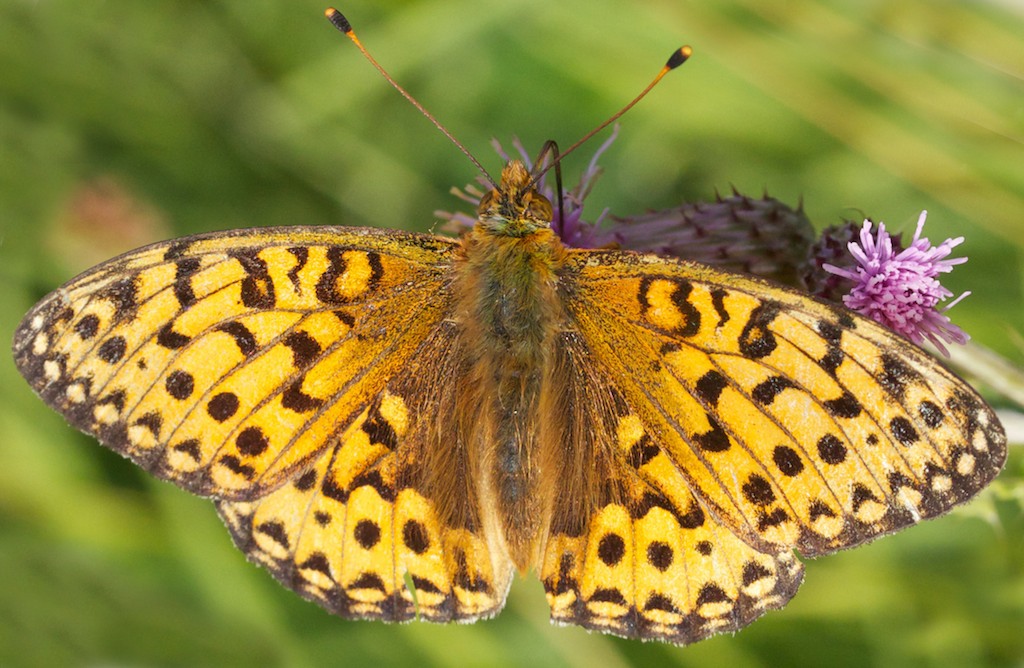59.020 Fabriciana (High Brown Fritillary)
ws: 55-69mm; mid-Jun to mid-Aug; common dog-violet, hairy violet (Viola riviniana/hirta); scarce and declining, now confined to Dartmoor, Exmoor, the limestone hills around Morecombe Bay and a few sites in Wales.
FULLY PROTECTED UNDER SCHEDULE 5 OF THE WILDLIFE AND COUNTRYSIDE ACT (1981)
Synonym: Argynnis (Fabriciana) adippe
FULLY PROTECTED UNDER SCHEDULE 5 OF THE WILDLIFE AND COUNTRYSIDE ACT (1981)
Synonym: Argynnis (Fabriciana) adippe
ID: Size and upperside similar to the other two large British fritillaries A.paphia (Silver-washed Fritillary) and A.aglaja (Dark Green Fritillary).
A.paphia has a green hindwing underside crossed by silvery bands and lacking the white spots shown by A.aglaja and A.adippe. A.adippe has a post-median row of red eye-spots on the hindwing underside not shown by A.aglaja. The ground colour of the hindwing underside is greenish in A.aglaja and more orange in A.adippe. A.aglaja is present at sites where A.adippe flies and is much more common. When selecting individuals to try to get a good view of the underside the post-median row of black spots on the forewing upperside can be useful. The central of these spots is noticeably smaller than the others in both species, but in A.adippe it is usually very much smaller.
A.paphia has a green hindwing underside crossed by silvery bands and lacking the white spots shown by A.aglaja and A.adippe. A.adippe has a post-median row of red eye-spots on the hindwing underside not shown by A.aglaja. The ground colour of the hindwing underside is greenish in A.aglaja and more orange in A.adippe. A.aglaja is present at sites where A.adippe flies and is much more common. When selecting individuals to try to get a good view of the underside the post-median row of black spots on the forewing upperside can be useful. The central of these spots is noticeably smaller than the others in both species, but in A.adippe it is usually very much smaller.
§1 Arnside, Cumbria; 26/07/2013
§2 Arnside, Cumbria; 27/07/2013
All images © Chris Lewis
§2 Arnside, Cumbria; 27/07/2013
All images © Chris Lewis
Page published 25/05/2014 (§1&2) | Change of genus May 2022


